Table of Contents
Come join us now, and enjoy playing your beloved music and browse through great scores of every level and styles!
Can’t find the songbook you’re looking for? Please, email us at: sheetmusiclibrarypdf@gmail.com We’d like to help you!
Sorabji: In the Hothouse (from Two Piano Pieces) sheet music, Noten, partitura, spartiti 楽譜

Best Sheet Music download from our Library.

Please, subscribe to our Library.
If you are already a subscriber, please, check our NEW SCORES’ page every month for new sheet music. THANK YOU!
Browse in the Library:
Or browse in the categories menus & download the Library Catalog PDF:
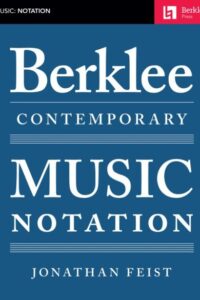
Who was Sorabji?
Kaikhosru Shapurji Sorabji: The Hermit of Modernist Maximalism
In the often-crowded pantheon of 20th-century composers, Kaikhosru Shapurji Sorabji (1892-1988) occupies a unique and enigmatic niche. A composer of staggering ambition, labyrinthine complexity, and self-imposed isolation, Sorabji crafted some of the most monumental, technically demanding, and stylistically idiosyncratic music ever conceived. His work, largely ignored during his lifetime and still challenging audiences today, represents a singular path through modernism – one defined by maximalism, intricate ornamentation, transcendental virtuosity, and a fierce, almost hermetic, independence.

Biography: A Self-Forged Identity
- Birth & Heritage: Born Leon Dudley Sorabji on August 14, 1892, in Chingford, Essex, England. His father was a Parsi engineer from India (thus the Persian-derived name Sorabji), and his mother was English-Spanish. This mixed heritage profoundly shaped his sense of identity, though he felt alienated from both cultures.
- The Name: Around 1914, he legally changed his name to Kaikhosru Shapurji Sorabji. “Kaikhosru” and “Shapurji” were Persian names chosen for their resonance and connection to ancient Persian history and Zoroastrianism, reflecting his deliberate construction of a unique persona.
- Musical Formation: Largely self-taught. He received some piano lessons in his youth but had no formal composition training. His musical education came through voracious listening, score study (especially Bach, Liszt, Busoni, Debussy, Ravel, Scriabin, Szymanowski, Medtner), and wide reading in literature, philosophy, and the occult.
- Early Career & Criticism: Worked as a music critic (under the pseudonym “S. Godfrey”) for outlets like The New Age and The New English Weekly from the 1910s to the 1930s. His critiques were famously acerbic, insightful, and often scathing, particularly targeting English musical provincialism and composers he deemed mediocre (which was most of them).
- The Recluse: Deeply disillusioned by the musical establishment and critical reception to his early performances (which were rare and often controversial), Sorabji gradually withdrew from public musical life starting in the late 1930s. After his mother’s death in 1940, he retreated almost completely to his secluded home “The Eye” in Corfe Castle, Dorset, where he lived with his companion, Reginald Norman Best, until his death. He forbade performances of his music for decades.
- The Ban Lifted: In 1976, pressured by a growing underground interest spearheaded by pianists like Yonty Solomon and Alistair Hinton (who later became his literary executor), Sorabji reluctantly lifted the ban on performances, provided he approved the performer.
- Death: Sorabji died on October 15, 1988, in Winfrith Newburgh, Dorset, leaving behind a colossal legacy of unpublished manuscripts.
Works: Monuments of Sound

Sorabji’s output is vast and overwhelmingly dominated by solo piano music, though he also composed orchestral works, chamber music, organ symphonies, and songs. His works are renowned for their extreme length, density, and technical difficulty, pushing the boundaries of playability.
- Key Masterpieces:
- Opus Clavicembalisticum (1930): His most famous (or infamous) work. A colossal 4+ hour piano epic in 12 movements (including fugues, passacaglias, toccatas, cadenzas), often considered one of the most challenging solo piano works ever written. A summit of contrapuntal complexity and virtuosic display.
- Symphonic Variations for Piano (1935-37): Another monumental work, exploring vast variation forms over an extended duration.
- Sequentia Cyclica super “Dies iræ” ex Missa pro Defunctis (1948-49): A massive cycle of 27 variations on the “Dies Irae” chant, demonstrating his intricate contrapuntal and transformative skills.
- 100 Transcendental Studies (1940-44): True to their name, these studies explore extreme technical and expressive demands far beyond those of Liszt or Chopin.
- Symphonies for Solo Piano: Several exist, including his Symphony No. 2 (“Jāmī”), blending orchestral textures and scope onto the piano.
- Gulistān – Nocturne for Piano (1940): A prime example of his lush, perfumed, and incredibly intricate “Persian”-inspired style.
- Concerti: He wrote several for solo piano and orchestra (e.g., Concerto per suonare da me solo e senza orchestra, per divertirsi), which are symphonic in scale and require superhuman virtuosity.
- Symphonies for Organ: Vast, complex works exploring the sonic possibilities of the instrument.
Analysis of Style: A Universe of Complexity
Sorabji’s style is instantly recognizable yet difficult to categorize. It synthesizes diverse elements into a unique and overwhelming whole:
- Maximalism: This is the defining characteristic. Sorabji embraced extremes:
- Length: Works lasting several hours are common.
- Density: Highly polyphonic textures, often with multiple independent melodic lines woven together in complex counterpoint (influenced by Bach, Busoni).
- Virtuosity: Demands transcendental technique – cascades of notes, complex polyrhythms, wide leaps, immense power, and extreme delicacy. He wrote as if the pianist had four hands.
- Ornamentation: Baroque-like ornamentation (trills, mordents, turns, grace notes) is ubiquitous, often layered and integral to the texture, creating shimmering, kaleidoscopic surfaces (influenced by Scriabin, Szymanowski, Middle Eastern/Persian music).
- Dynamic Range: From barely audible whispers to thunderous, percussive climaxes.
- Harmony: A complex fusion:
- Rooted in late-Romantic chromaticism (Scriabin, Szymanowski, early Schoenberg).
- Freely employed dissonance, clusters, and intricate chord structures.
- Often retained a sense of tonal centers or polarity, even amidst dense chromaticism (unlike strict atonality).
- Incorporated modal inflections, sometimes evoking Persian or Spanish flavors.
- Rhythm: Highly complex and fluid:
- Frequent use of polyrhythms (multiple simultaneous rhythms), cross-rhythms, and nested tuplets (triplets within quintuplets, etc.).
- Tempo often fluctuates wildly, requiring immense control.
- A sense of improvisatory freedom within highly structured forms.
- Form: Often large-scale, complex, and idiosyncratic:
- Favored variations (passacaglias, chaconnes), fugues, toccatas, and intricate multi-movement structures (like the Opus Clavicembalisticum).
- Forms were often expansive and cumulative, building through layered repetition and intensification rather than traditional development.
- Architecture was paramount, even in the densest textures.
- Influences (Assimilated, Not Imitated):
- Ferruccio Busoni: The most profound influence. Busoni’s ideas of “Young Classicism,” the transcendental potential of the piano, the fusion of Bachian counterpoint with modern harmony, and the concept of “Junge Klassizität” resonated deeply. Sorabji dedicated his Opus Clavicembalisticum to Busoni’s memory.
- Franz Liszt: Virtuosity, thematic transformation, large-scale forms, and the symphonic poem concept translated to piano.
- J.S. Bach: Contrapuntal mastery, structural rigor, and the use of forms like fugue and passacaglia.
- Alexander Scriabin: Mysticism, harmonic language, dense textures, and ecstatic climaxes.
- Karol Szymanowski: Sensuous harmony, intricate ornamentation (especially in the “Persian” inspired works like Métopes and Masques), and voluptuous textures.
- Debussy & Ravel: Color, texture, exoticism, and pianistic refinement.
- Mediterranean & Persian Cultures: While not authentically recreating these styles, he evoked their essence through ornamentation, melodic turns, and titles (Gulistān, Jāmī), reflecting his fascination with his Persian heritage and the wider Orient.
- Aesthetic: Sorabji’s music aimed for:
- Transcendence: Pushing beyond perceived limits of instrument, performer, and listener.
- Luxuriance & Opulence: A rich, sensual, almost decadent sound world.
- Intellectual Rigor: Underlying the sensual surface was meticulous structural planning.
- Individualism: A complete rejection of prevailing trends (serialism, neoclassicism, minimalism) in favor of his own uncompromising vision.
Legacy: From Obscurity to Cult Status
Sorabji’s legacy is complex and evolving:
- Decades of Neglect: His self-imposed exile and performance ban meant his music was virtually unknown outside a tiny circle for nearly 40 years. Manuscripts were inaccessible, unplayable, and unpublished.
- The Pioneers (1970s-): The lifting of the ban sparked interest. Pianists like Yonty Solomon, Michael Habermann, Geoffrey Douglas Madge (who made the first complete recording of Opus Clavicembalisticum in 1977), and later Marc-André Hamelin, Jonathan Powell, Fredrik Ullén, and Ronald Stevenson began the monumental task of learning, performing, and recording his works. This required immense dedication and technical prowess.
- Publication & Scholarship: The Sorabji Archive, established by Alistair Hinton (Sorabji’s literary executor), has been crucial in cataloging, editing, and facilitating the publication of scores (primarily by Dover Publications and The Sorabji Music Archive). Scholarly work is gradually increasing.
- Recordings Renaissance: The CD era and digital distribution (YouTube, streaming) have been transformative. Dedicated labels (Altarus, BIS, Toccata Classics, Piano Classics) have released numerous recordings, making this once-inaccessible music available globally. Complete cycles of the 100 Studies and other major works are underway.
- The Cult & The Challenge: Sorabji remains a “composer’s composer” and a cult figure. His music is not mainstream concert fare due to its extreme demands and duration. However, it commands deep respect and fascination among pianists, composers, and listeners drawn to its unique sound world and uncompromising vision. He is seen as the ultimate iconoclast, forging a path utterly independent of 20th-century musical fashions.
- Influence: His direct influence on other composers is hard to pinpoint due to his obscurity, but he stands as a powerful symbol of uncompromising artistic integrity and the exploration of extreme complexity and virtuosity. Composers interested in maximalism, intricate counterpoint, or pushing pianistic limits inevitably encounter his shadow.
- Copyright Controversy: The complex copyright status of his works (involving the Sorabji Archive and publishers) has sometimes been a point of friction within the community of performers and scholars seeking access.
Sorabji: The Solitary Giant
Kaikhosru Shapurji Sorabji was a true original. He inhabited a musical universe entirely of his own making, synthesizing diverse influences into a style characterized by unparalleled complexity, sensuous opulence, and transcendental ambition. His deliberate withdrawal from the world ensured decades of obscurity, but the dedication of pioneering performers and the power of recording technology have brought his extraordinary soundscapes to light. While his music remains challenging and demanding, it offers unparalleled rewards: a journey into a world of labyrinthine beauty, overwhelming power, and intellectual fascination. Sorabji stands as a testament to the power of an utterly individual artistic vision, uncompromising in its scope and ambition, a solitary giant whose monumental creations continue to challenge and inspire. He redefined the possible for the piano and left a legacy that continues to unfold as more performers dare to scale his musical Himalayas.
“In the Hothouse” is one of Sorabji’s most evocative and frequently performed works, serving as a perfect entry point into his dense, sensuous sound world. Here’s a detailed look at this fascinating piece:
Context: Two Piano Pieces (1918)
- Composed: 1918 (early in Sorabji’s career, age 26).
- Publication: First published in 1920, making it one of the earliest Sorabji works available in print.
- The Pair: “In the Hothouse” is paired with “Toccata” – a contrasting, hyper-virtuosic, and structurally complex piece showing his Busoni/Liszt influences. “In the Hothouse” offers the sensual, atmospheric counterpoint.
- Significance: Represents Sorabji’s early mastery of texture, harmony, and evocative atmosphere. It predates his gargantuan works but already displays his unique voice.
“In the Hothouse”: A Sensory Immersion
- Title & Imagery: The title instantly conjures an environment: humid, lush, teeming with exotic, overripe plant life, heavy perfumes, and stifling, enclosed heat. Sorabji translates this sensory overload into sound.
- Form & Structure: Relatively free and rhapsodic. It unfolds as a continuous, organic stream of consciousness rather than adhering to strict classical forms. Think of it as an elaborate, decadent arabesque.
- Style & Character:
- Extreme Sensuality: This is the defining feature. The music drips with lush, complex harmonies and suffocatingly rich textures.
- Harmony: Deeply chromatic, rooted in late Scriabin and early Szymanowski. Expect dense, constantly shifting chords: augmented harmonies, whole-tone inflections, unresolved dissonances creating tension, and sudden moments of surprising consonance like shafts of light piercing foliage. It avoids traditional tonality but gravitates around implied centers.
- Texture: Thick, layered, and constantly in motion. Tremolos, trills, rapid filigree (ornamental passages), and cascading arpeggios create a shimmering, humid haze. Melodies are often embedded within this dense undergrowth rather than standing clearly apart. The writing often requires the pianist to sustain multiple layers simultaneously.
- Rhythm: Fluid and flexible, often obscured by the sheer density of notes and ornamentation. Rubato (expressive tempo fluctuations) is essential. While less overtly complex polyrhythmically than his later works, the rhythmic flow feels organic and improvisatory.
- Dynamics & Articulation: Wide dynamic range, often shifting suddenly between extremes (e.g., thunderous climaxes collapsing into fragile whispers). Articulation varies from sharp staccatos to legatissimo passages that blur together. Pedaling is crucial for sustaining the harmonic haze and creating resonance.
- Ornamentation: Quintessential early Sorabji. Trills, mordents, turns, and grace notes are not mere decoration; they are the texture, creating constant flickering movement and contributing to the claustrophobic, teeming atmosphere. This foreshadows the intricate ornamentation dominating his mature style.
- Emotional Landscape: Evokes opulence, decadence, languor, mystery, stifling heat, hidden dangers, and overwhelming sensory stimulation. There’s a sense of beauty bordering on the grotesque due to its sheer intensity.
Influences Audible in “In the Hothouse”
- Scriabin (Primary): The harmonic language (mystic chords, unresolved dissonance, ecstatic climaxes), the sensual atmosphere, and the use of trills/tremolos are deeply indebted to Scriabin’s late sonatas and poems (e.g., Vers la flamme). Sorabji pushes Scriabin’s decadence further.
- Szymanowski: The opulent textures, perfumed harmonies, and “orientalist” exoticism (though abstracted here) strongly recall Szymanowski’s “Métopes” or “Masques,” which Sorabji admired deeply.
- Debussy: The focus on atmosphere, texture, and harmonic color (whole-tone scales, parallel chords) shows Debussy’s influence, though rendered with far greater density and intensity.
- Ravel: The virtuosic filigree and lush harmonies (think “Gaspard de la Nuit,” especially “Ondine” or “Le gibet”) are a touchstone, again amplified.
- Liszt: The rhapsodic freedom and dramatic gestures hint at Liszt, though filtered through a post-Scriabinesque lens.
Performance Challenges
- Texture & Balance: Maintaining clarity amidst the dense, rapidly shifting textures is paramount. The pianist must carefully voice chords and layers to prevent muddiness while sustaining the essential harmonic haze.
- Ornamentation as Texture: Executing the constant ornamentation smoothly and evenly, integrating it into the melodic and harmonic flow rather than treating it as mere decoration.
- Dynamic Control: Navigating the extreme dynamic contrasts and sudden shifts without sounding jarring. Creating a true pianissimo shimmer within complexity is incredibly difficult.
- Rubato & Phrasing: Applying expressive tempo fluctuations naturally while maintaining the overall structural coherence and forward momentum of the rhapsodic form.
- Pedaling: Using the pedal to create resonance and blend without causing harmonic blurring or loss of rhythmic definition. Requires exceptional sensitivity.
- Stamina & Focus: While shorter than his later works (typically 12-15 minutes), the piece demands intense concentration and physical control to sustain the atmosphere and navigate the technical intricacies.
Legacy & Significance of “In the Hothouse”
- Accessibility: It remains one of Sorabji’s most “accessible” works due to its evocative title, relatively shorter duration, and concentrated expression. It’s a frequent choice for pianists introducing audiences to Sorabji.
- Blueprint: It serves as a crucial blueprint for Sorabji’s mature style, showcasing his core preoccupations: sensuality, harmonic density, intricate ornamentation as texture, and atmospheric evocation, all present in embryonic form.
- Performance History: Despite Sorabji’s later ban, “In the Hothouse” (along with the Toccata) was one of the few pieces occasionally performed during his lifetime (e.g., by Sorabji himself and pianist Reginald Paul) and became a key work for the pioneering generation post-1976 (Yonty Solomon, Michael Habermann, Marc-André Hamelin, Jonathan Powell, Fredrik Ullén).
- Gateway Piece: It functions as a vital “gateway drug” into Sorabji’s world. Its success in conveying its intense atmosphere often encourages listeners to explore his more monumental, complex works.
- Standalone Masterpiece: Regardless of its role as an introduction, it stands as a perfectly formed and powerful piece of early modernist piano writing, a miniature tone poem of extraordinary evocative power.
“In the Hothouse” is a sun-drenched, overripe, and intoxicating immersion into Sorabji’s unique aesthetic. It captures the essence of his sensual maximalism in a concentrated dose, showcasing his debt to Scriabin and Szymanowski while asserting his own distinct voice. Its evocative power, technical brilliance, and relative brevity ensure its enduring place as one of his most beloved and frequently performed works, offering a compelling glimpse into the hothouse of Sorabji’s extraordinary musical imagination.
| Artist or Composer / Score name | Cover | List of Contents |
|---|---|---|
| Pink Martini – Lullaby |
 |
|
| Pink Panther – The Pink Panther Theme | ||
| Pink_Floyd Wish_You_Were_Here (Piano Solo) (Musescore file).mscz | Musescore File | |
| Pino Calvi – Accarezzame |
 |
|
| Pino Daniele Antologia Spartiti |
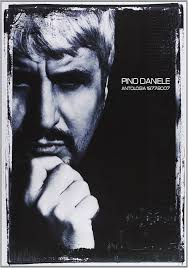 |
|
| Pinocchio – When You Wish Upon a Star (music from the film) Easy Piano Solo arr. sheet music | Pinocchio – When You Wish Upon a Star (music from the film) Easy Piano Solo arr. sheet music | |
| Pinocchio Fiorenzo Carpi Tema Di Geppetto Le Aventure Di Pinocchio |
 |
|
| Pinocchio sheet music soundtrack (Dario Marianelli) |
 |
|
| Pinocchio Theme |
 |
|
| Pinocchio, Le Canzoni Leigh Harline |
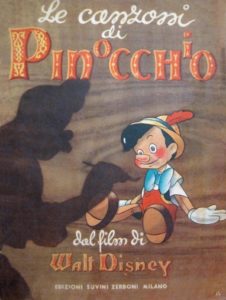 |
Pinocchio Le Canzoni Di – Leigh Harline |
| Piovani ”La vita e bella” (Life is beautiful) Screen Music, full score |
 |
|
| Pirates Of The Caribbean – Hes A Pirate – Klaus Badelt | ||
| Pirates of the Caribbean – Klaus Badelt Concert Band Medley |
 |
Pirates of the Caribbean – Klaus Badelt Concert Band Medley |
| Pirates Of The Caribbean – Moonlight Serenade – Klaus Badelt | Pirates-Of-The-Caribbean-Moonlight-Serenade-Klaus-Badelt | |
| Pirates Of The Caribbean – The Medallion Calls – Klaus Badelt | ||
| Pirates of the Caribbean – The Medallion Calls Klaus Badelt (Piano solo sheet music) |
 |
|
| Pirates Of The Caribbean As Jarrod Radnich Virtuosic Piano Solo (Klaus Badelt) | Pirates Of The Caribbean As Jarrod Radnich Piano Solo (Klaus Badelt) | |
| Pirates Of The Caribbean Medley (Klaus Badelt) |
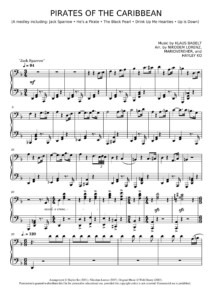 |
|
| Pirates Of The Carribean – Davy Jones – Hans Zimmer | ||
| Pirates Of The Carribean – The Medallion Calls – Klaus Badelt | ||
| Pirotte, Gilles – Piano transcriptions in Modernen Styl | Pirotte, Gilles – Pianotranscriptions in Modernen Styl | |
| Pischna – Technical Studies 60 Progressive Exercises | ||
| Pischna – The Little Pischna, 48 Practice Pieces | ||
| Piston, Walter – Counterpoint (1947) |
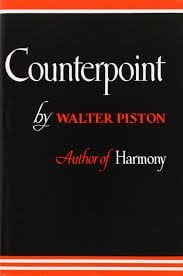 |
|
| Piston, Walter – Harmony (1941) |
 |
|
| Piston, Walter Orchestration (1955) |
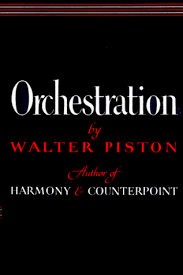 |
|
| Pitch Perfect Songbook Music from the Motion Picture Soundtrack – Anna Kendrick sheet music |
 |
Pitch Perfect Songbook Music from the Motion Picture Soundtrack – Anna Kendrick sheet music |
| Più su (Renato Zero) | ||
| Pixies Where Is My Mind (piano vocal sheet music) arr. Maxence Cyrin |
 |
|
| Pixinguinha, O Melhor de – Songbook (Guitar) |
 |
Pixinguinha, O Melhor de – Songbook (Guitar) |
| Pizzarelli, John – World on a string – a musical memoir (Book) |
 |
|
| Placebo The Singles (Guitar with Tablature) |
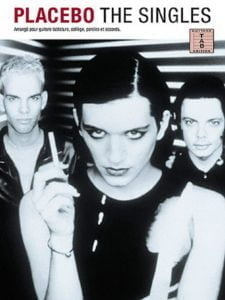 |
Placebo The Singles (Guitar) |
| Places of the Heart (The Survivors) | ||
| Plaidy Technical Studies Klauser (1875-1903) |
 |
|
| Plain White Ts – Hate | ||
| Plain White Ts – Hey There Delilah | ||
| Plaisir d’Amour Florian-Martini |
 |
|
| Play Acoustic Guitar – The Complete Guide to Mastering Acoustic Guitar Styles [Dave Hunter 2005) with Tablature |
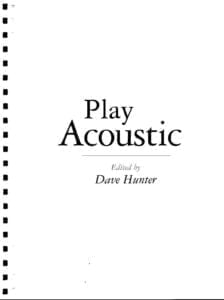 |
Play acoustic guitar |
| Play Along Blues By The Bar with MP3 audio tracks Chris Hunt (Guitar) |
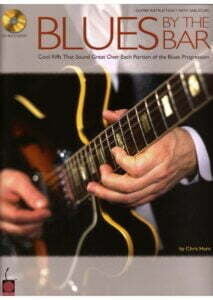 |
Play Along Blues By The Bar with MP3 audio tracks Chris Hunt – |
| Play Blues Guitar – Jurgen Kumlehn (German-Deutsch) WITH AUDIO MP3 |
 |
Play Blues Guitar |
| Play Guitar With Chuck Berry With Mp3 Audio Tracks with Tablature |
 |
play guitar with chuck berry |
| Play Guitar With – Bob Dylan – with MP3 audio tracks with Tablature |
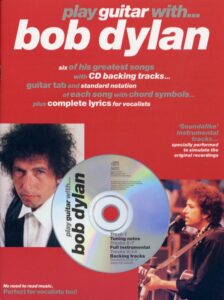 |
Play Guitar With – Bob Dylan – with MP3 audio tracks |
| Play Guitar With – Jeff Buckley with audio MP3 with Tablature |
 |
Play Guitar With – Jeff Buckley with audio MP3 |
| Play Guitar With B.B. King (with audio MP3) with Tablature |
 |
Play Guitar With B.B. King |
| Play Guitar with Bryan Adams (with AUDIO MP3) with Tablature |
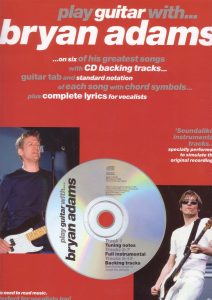 |
Bryan Adams |
| Play Guitar with U2 1980-1983 (with AUDIO MP3) with Tablature |
 |
U2 1980-1983 |
| Play Guitar with U2 1984-1987 (with AUDIO MP3) with Tablature |
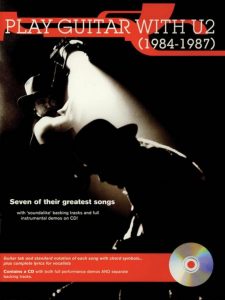 |
U2 1984-1987 |
| Play It Again Piano The Perfect Way To Rediscover The Piano Book 1 by Melanie Spanswick |
 |
Play It Again Piano The Perfect Way To Rediscover The Piano Book 1 by Melanie Spanswick |
| Play It Again Piano The Perfect Way To Rediscover The Piano Book 2 by Melanie Spanswick |
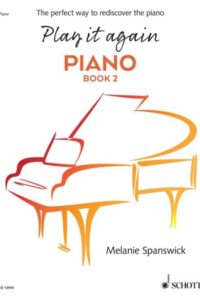 |
Play It Again Piano The Perfect Way To Rediscover The Piano Book 2 by Melanie Spanswick |
| Play It Again Piano The Perfect Way To Rediscover The Piano Book 3 by Melanie Spanswick |
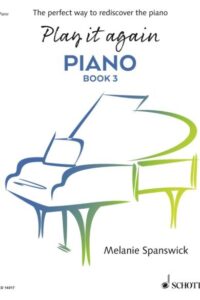 |
|
| Play Piano in a Flash PDF and Audio Examples MP3 by Scott The Piano Guy Houston |
 |
Play Piano in a Flash! |
| Play Piano With Corinne Bailey Rae, Rihanna, Norah Jones, Diana Krall, and more (with AUDIO MP3) |
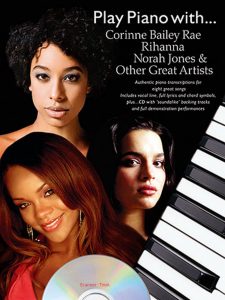 |
Play Piano with Corinne Bailey Rae |
| Play Piano With John Lennon, Queen, David Bowie, Lou Reed, Paul Mccartney, The Doors, Elton John And Simon & Garfunkel (Book+audio tracks)) |
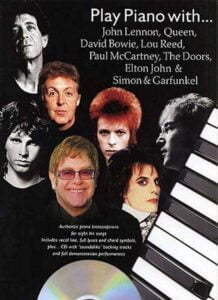 |
Play Piano With John Lennon, Queen, David Bowie, Lou Reed, Paul Mccartney, The Doors, Elton John And Simon And Garfunkel (Book+audio tracks)) |
| Play Piano With Paul McCartney (with AUDIO MP3) |
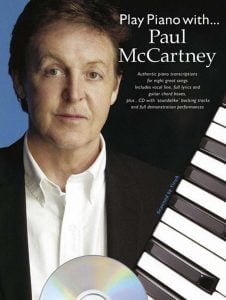 |
Play Piano With Paul McCartney |
| Playing Changes Jazz For The New Century by Nate Chinen (Book) |
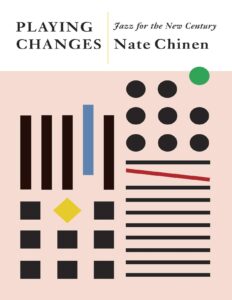 |
|
| Playing Guitar Like A Pro Lead, Solo, And Group Performance (Colin Mcallister) Guitar TABs |
 |
Playing Guitar like a Pro_ Lead, Solo, and Group Performance |
| Playing Love – E. Morricone (Musescore File).mscz | ||
| Playing The Piano For Pleasure The Classic Guide To Improving Skills Through Practice And Discipline By Charles Cooke Book |
 |
|
| Playtime Piano Disney Level 1 (Nancy Faber, Randall Faber) Sheet Music |
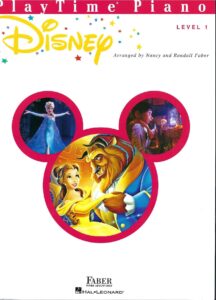 |
Playtime Piano Disney Level 1 (Nancy Faber, Randall Faber) Sheet Music |
| Plein Soleil (Purple Noon) Nino Rota | ||
| Plus que ma propre vie – Breaking Dawn 2 OST (Carter Burwell) | ||
| Pocachontas – The Colors Of Wind | ||
| Pocahontas – The Colors Of Wind | Michael-Nyman Diary-of-Love The-end-of-the-affair | |
| Pocahontas Songbook |
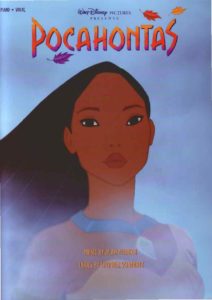 |
Pocahontas Songbook |
| Pogues – Fairytale of New York (2 versions) | Pogues – Fairytale of New York (2 versions) | |
| Pogues The Best of The Pogues Piano Vocal guitar Songbook |
 |
Pogues The Best of The Pogues Piano Vocal guitar Songbook |
| Poirot – Five Little Pigs (Christopher Gunning) | ||
| Poirot – The Hollow (Christopher Gunning) | ||
| Poirot – Vera Rossakoff Theme – The Double Clue Christopher Gunning |
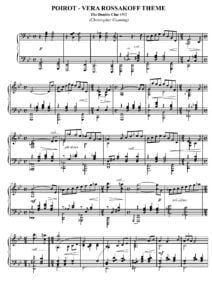 |
|
| Pokemon – Gotta Catch ’em all |
 |
|
| Pokemon Black And White OST Route 10 Game sheet music pdf |
 |
|
| Pokemon Black Version Pokemon White Version – Lacunosa Town |
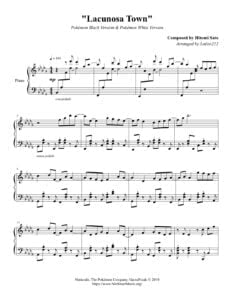 |
|
| Pokemon BW – Driftveil City |
 |
|
| Pokemon Gold and Silver New Bark Town by Junichi Masuda Piano Solo |
 |
|
| Pokemon Heartgold Soulsilver Ost National Park Game sheet music pdf |
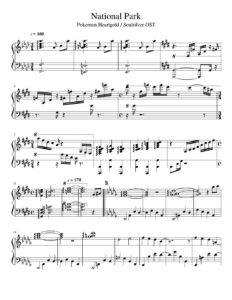 |
|
| Pokemon Piano Solo arr. | Pokemon Piano Solo arr. | |
| Pokemon Theme For Piano Easy |
 |
|
| Pokémon Theme Song Piano Solo (Musescore File).mscz | ||
| Polar Express – Believe Sheet Music Josh Groban Sheet Music |
 |
|
| Polka Dots and Moonbeams (J. Van Heusen) |
 |
|
| Polka Dots And Moonbeams (Jazz Standard) Jimmy Van Heusen (Musescore File).mscz | ||
| Polka Dots And Moonbeams Jazz Standards | Polka Dots And Moonbeams Jazz Standards | |
| Polyrhythms The Musicians Guide (Peter Magadini) Book |
 |
|
| Pop and Rock for classical guitar, Best of by Joao Fuss with Tablature Book + MP3 Audio Play Along (embedded) |
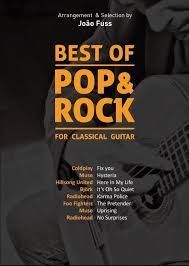 |
Pop and Rock for classical guitar, Best of by Joao Fuss with Tablature Book + MP3 Audio Play Along (embedded) |
| Pop And Rock, The Cambridge Companion To Pop And Rock (Book) |
 |
|
| Pop Divas Of The New Millenium |
 |
Pop Divas Of The New Millenium 313pages |
| Pop Folk Songs Songbook, The Most Requested – sheet music |
 |
Pop Folk Songs Songbook, The Most Requested – sheet music |
| Pop Hits – Instant Piano Songs Simple Sheet Music (Audio MP3 Play Along inc.) |
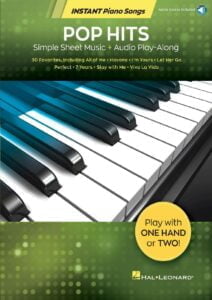 |
Pop Hits – Instant Piano Songs Simple Sheet Music (Audio MP3 Play Along inc.) |
| Pop Hits Fur Klassische Gitarre with TABs and Guitar chords |
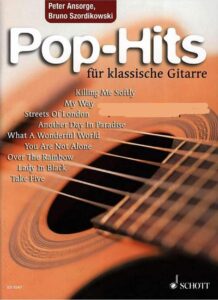 |
Pop Hits Fur Klassische Gitarre with TABs |
| Pop Hits Transcriptions For Solo Guitar with Tablature |
 |
Pop Hits Transcriptions For Solo Guitar |
| Pop Keyboard Library By Dan Coates |
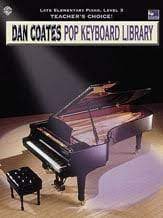 |
Pop Keyboard Library By Dan Coates |
| Pop Piano (Metodo Per Lo Studio Del Pianoforte Moderno Spartiti) |
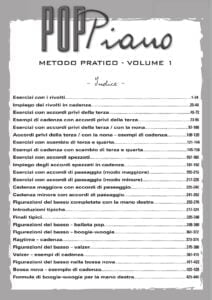 |
|
| Pop Piano Book, The By Mark Harrison |
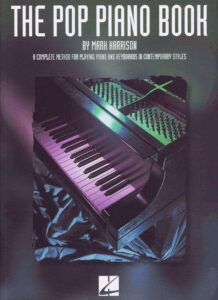 |
Pop Piano Book, The By Mark Harrison |
| Pop Rock Anthology (Songbook) with guitar chords |
 |
Pop Rock Anthology (Songbook) with guitar chords |
| Pop Sheet Music Collection, The Ultimate – 81 Great Covers |
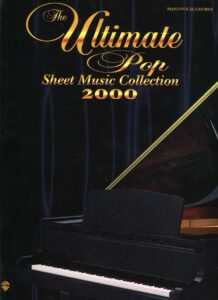 |
Pop Sheet Music Collection, The Ultimate – 81 Great Covers |
| Pop Songs In A Classical Sytle Piano Solo |
 |
Pop Songs In A Classical Sytle Piano Solo |
| Pop Songs Of All Time, The Very Best Piano Vocal Guitar Chords |
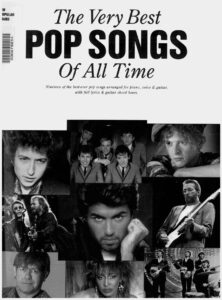 |
Pop Songs Of All Time, The Very Best Piano Vocal Guitar Chords |
| Pop Standards – Super Easy Songbook |
 |
Pop Standards – Super Easy Songbook |
| Pop Standards Jazz Piano Solos Series Volume 41 |
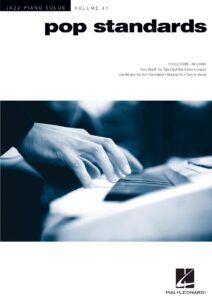 |
Pop Standards Jazz Piano Solos Series Volume 41 |
| Pop, Rock, Jazz for Classical Guitar Arrangements by Igor Bartholomew |
 |
|
| Poppy Ackroyd – Birdwoman |
 |
|
| Poppy Ackroyd – Strata |
 |
|
| Popular Christmas Sheet Music -1940-1979 |
 |
Popular Christmas Sheet Music -1940-1979 |
| Popular Christmas Sheet Music–1980-2017 |
 |
Popular Christmas Sheet Music–1980-2017 |
| Popular Classics Of The Great Composers arr. for Classical Guitar Vol. 1 for all levels by Jason Waldron |
 |
Popular Classics Of The Great Composers arr. for Classical Guitar Vol. 1 for all levels by Jason Waldron |
| Popular Classics Of The Great Composers arr. for Classical Guitar Vol. 2 for all levels by Jason Waldron |
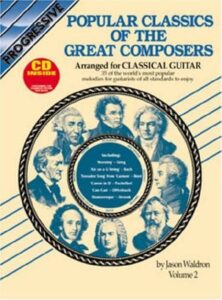 |
Popular Classics Of The Great Composers arr. for Classical Guitar Vol. 2 for all levels by Jason Waldron |
| Popular Classics Of The Great Composers arr. for Classical Guitar Vol. 3 for all levels by Jason Waldron |
 |
Popular Classics Of The Great Composers arr. for Classical Guitar Vol. 3 for all levels by Jason Waldron |
| Popular Classics Of The Great Composers arr. for Classical Guitar Vol. 4 for all levels by Jason Waldron |
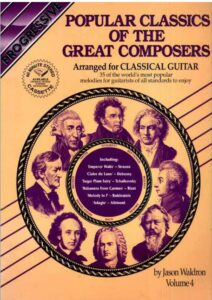 |
Popular Classics Of The Great Composers arr. for Classical Guitar Vol. 4 for all levels by Jason Waldron |
| Popular Piano Solos – Book 7 – Blues |
 |
Popular Piano Solos – Book 7 – Blues |
| Popular Piano Solos – Book 8 – Jazz |
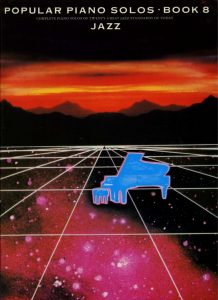 |
Popular Piano Solos – Book 8 – Jazz |
| Popular Piano Solos – Level Three for all piano methods |
-218x300.jpg) |
Popular Piano Solos Book 3 |
| Popular Piano Solos Book 10 |
 |
Popular Piano Solos Book 10 |
| Popular Piano Solos Book 1 |
 |
Popular Piano Solos Book 1 |
| Popular Piano Solos Book 2 |
 |
Popular Piano Solos Book 2 |
| Popular Piano Solos Book 3 |
 |
Popular Piano Solos Book 3 |
| Popular Piano Solos Book 6 |
 |
Popular Piano Solos Book 6 |
| Popular Piano Solos For All Piano Methods – Level 2 (Bill Boyd) |
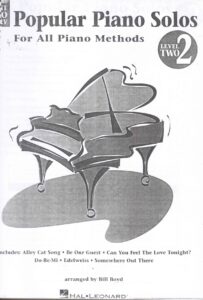 |
Popular Piano Solos For All Piano Methods – Level 2 (Bill Boyd) |
| Popular Piano Solos Pop Hits, Broadway, Movies And More Grade 2 John Thompson Modern Course |
 |
Popular Piano Solos Pop Hits, Broadway, Movies And More Grade 2 John Thompson Modern Course |
| Popular Piano Solos. Pop Hits, Broadway, Movies And More Grade 5 John Thompson Modern Course |
 |
Popular Piano Solos. Pop Hits, Broadway, Movies And More Grade 5 |
| Popular Sheet Music – 30 Hits From 2015-2017 Easy Piano (Piano, vocal, Guitar chords) |
 |
Popular Sheet Music – 30 Hits From 2015-2017 Easy Piano |
| Popular Sheet Music 30 Hits from 2014-2016 |
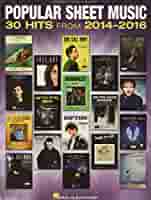 |
Popular Sheet Music 30 Hits from 2014-2016 |
| Por una Cabeza (Carlos Gardel) | ||
| Por Una Cabeza (Tango) (Musescore File).mscz | ||
| Porco Rosso (Intro) Jose Hisaishi (Abrsm Piano Grade 8) Musescore File.mscz | ||
| Portman, Rachel – The Cider House Rules | Portman, Rachel – The Cider House Rules | |
| Post-Bop Jazz Piano by John Valerio |
 |
Post-Bop Jazz Piano by John Valerio |
| Poster (Claudio Baglioni) | ||
| Postmodern Listening by Jonathan Kramer (Book) |
 |
|
| Potsu Fall Apart Piano Solo |
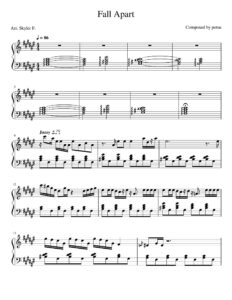 |
|
| Potsu Have You Heard Piano Solo |
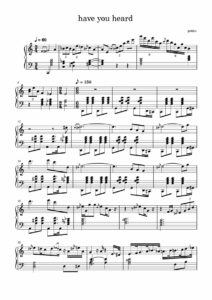 |
|
| Potsu Just Friends Guitar Tablature | Potsu Just Friends Guitar Tablature | |
| Potsu Just Friends Piano Solo |
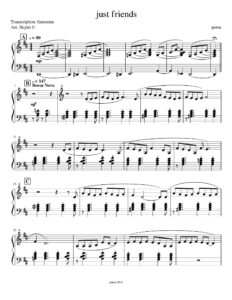 |
|
| Potsu Undone Piano Solo |
 |
|
| Poulenc Francis – Trois Pièces (piano) |
 |
|
| Poulenc Improvisation No 15 (Hommage À Edith Piaf) Piano Solo |
 |
|
| Poulenc Nocturnes |
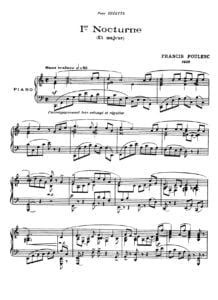 |
|
| Practising The Piano (By Frank Marrick) (1958) |
 |
|
| Praise & Worship (Guitar Songbook) 80 songs – sheet music |
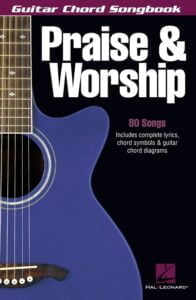 |
Praise & Worship (Guitar Songbook) – sheet music |
| Praise Classics For Piano 20 Praise Classics Arranged By Carl Seal |
 |
Praise Classics For Piano 20 Praise Classics Arranged By Carl Seal |
| Praise Worship Songbook 1 Hosanna Music Songbook New Songsfor Worship Churches |
 |
Praise Worship Songbook 1 Hosanna Music Songbook New Songsfor Worship Churches |
| Praise Worship Songbook 2 Hosanna Music Songbook New Songsfor Worship Churches |
 |
Praise Worship Songbook 2 Hosanna Music Songbook New Songsfor Worship Churches |
| Praise Worship Songbook 3 Hosanna Music Songbook New Songsfor Worship Churches |
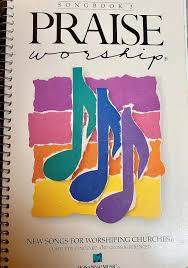 |
Praise Worship Songbook 3 Hosanna Music Songbook New Songsfor Worship Churches |
| Praise Worship Songbook 4 Hosanna Music Songbook New Songsfor Worship Churches |
 |
Praise Worship Songbook 4 Hosanna Music Songbook New Songsfor Worship Churches |
| Praise Worship Songbook 5 Hosanna Music Songbook New Songsfor Worship Churches |
 |
Praise Worship Songbook 5 Hosanna Music Songbook New Songsfor Worship Churches |
| Prehistoric Piano Time – Never Vex a Tyrannosaurus Rex! (Oxford Piano Method) |
 |
|
| Preisner – 10 Easy Pieces for Piano |
 |
|
| Preisner – Les Marionettes |
 |
|
| Preisner Song For The Unification Of Europe Three Colours Blue | Preisner Song For The Unification Of Europe Three Colours Blue | |
| Preisner, Zbigniew The Art Of Flying sheet music |
 |
|
| Prelude – Etude (Bach – Chopin) |
